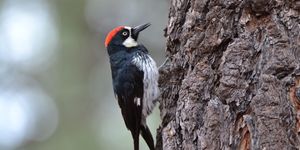Newly-Discovered Worm Has Eyeballs on its Butt
Those working in the field of Biology will likely happen upon a plethora of strange things throughout their career, and that includes this newly-discovered marine worm species, which was purportedly found off the coast of Scotland while researchers were conducting seafloor samples of the West Shetland Shelf Marine Protected Area (MPA) for scientific analysis.
Image Credit: National Museums Scotland
The newly-discovered worm, which has been officially named Ampharete oculicirrata, is being described this month in a paper published in the European Journal of Taxonomy. It’s particularly astonishing because of the unconventional placement of its eyes – while some appear on the head as most would come to expect, the other ones purportedly reside on the worm’s posterior.
Indeed, you read that right; the newly-described worm species has eyeballs on its butt. Strange, right?
Related: What makes a species invasive?
A. oculicirrata isn’t particularly large, which could explain why it went undetected for so long. At just 4 millimeters (less than 0.2 inches) in length, you’d be hard-pressed to get a good look at the little critter without a microscope. Nevertheless, the close-up images provided by the scientists responsible for uncovering the worm are particularly breathtaking.
On the rear-end of the worm, you’ll notice two string-like appendages – these are the rear-facing eyes. Researchers say that this is a particularly rare feature in many of the worm’s closest relatives, and that based on the worm’s biology, it’s likely a bottom-feeding critter.
The fact that this worm was discovered in a Marine Protected Area is also particularly noteworthy, as it goes to show that these regions are scientifically valuable and that they should remain protected.
"The fact that it was found in relatively shallow depths, relatively close to the Scottish coastline, shows just how much more there is to understand about the creatures that live in our waters," commented Jessica Taylor, a scientist with the Joint Nature Conservation Committee (JNCC).
"I'm excited about future JNCC and Marine Scotland surveys and what they may reveal," she continued, "and it's great that specimens of the new species have been acquired by National Museums Scotland and are available for future studies."
Related: How worms can help researchers learn more about PTSD
It should be interesting to see what other marine species might be hiding in the ocean as scientists continue their search. After all, this knowledge goes on to fuel a better understanding of the world around us and the animals that inhabit it.
Source: BBC, Live Science, European Journal of Taxonomy









